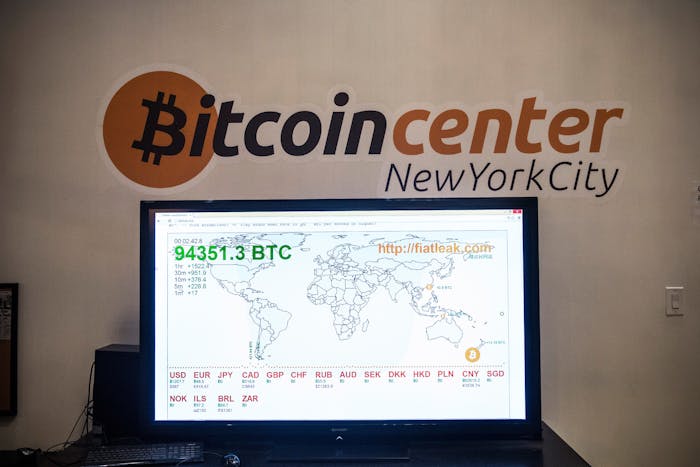August going to be a huge month in bitcoin history.
Bitcoin, the largest cryptocurrency on the internet, is currently at a crossroads.
Before August 1, the powerful users who “mine” the currency with souped-up PCs will have to choose whether or not to apply BIP 91, a set of software code to the bitcoin’s bedrock, known as the blockchain — a chronological public ledger that documents every transaction of the digital currency. While the miners currently seem to be in favor of the update, the controversial decision on how to update the cryptocurrency’s technology has driven a rift between several groups of users, leading many to speculate that at some point, the technology will “fork.” But the concept of a fork is complicated, and involves everything from the specific technology applied to bitcoin to the foundational philosophy behind the cryptocurrency. Here are five things you need to know about a possible bitcoin fork.
1. What is a bitcoin fork?
In financial terms, a fork means represents a split in a currency into two different, competing currencies. For bitcoin, a fork would mean that a technological update significantly changes the rules and code of the bitcoin system so much that it’s no longer backward compatible with the old system, like a new XBox that no longer plays games from an older model. Some users would inevitably stick to the old system, either because they can’t afford to upgrade or because they like it better, creating two completely different currencies — bitcoin classic and bitcoin current.
 A television screen displays various bitcoin rates at Bitcoin Center NYC.
A television screen displays various bitcoin rates at Bitcoin Center NYC.
2. Why would bitcoin need an update that big?
The first thing you need to know is what, exactly, is wrong with bitcoin as it is now. The short answer is that it’s way too slow. Bitcoin’s current blockchain technology can only facilitate, at most, seven transactions per second. Other financial systems, like credit and debit card networks, regularly handle about 1,700 transactions per second, and have the power to handle 56,000 per second if pushed. But because of the democratic open source nature of the blockchain, there are several different plans to make bitcoin faster — and some of them include a fork.
3. What’s the difference between a “hard” fork and a “soft” fork?
Most of the solutions to bitcoin’s problem include some kind of fork, but a “hard” fork is the one that has people worried, because splitting the currency could wreak havoc on its soaring value. The big difference between the two is the concept of backward compatibility. A “soft fork” is a significant change or update to the technology that is still compatible with older versions of the code. In a soft fork, the blockchain temporarily splits, but the new “blocks,” the building units of the chain still recognize the old ones as valid. A “hard fork,” however, is something that changes the rules so significantly that new blocks no longer recognize the old data as valid, permanently splitting the chain. The two chains, or ways of recording currency, run parallel to one another, but can’t swap data back and forth — they’re no longer compatible.
4. Why do some think bitcoin needs a hard fork?
The hard fork bitcoin camp is largely basing their plan on one big change — upgrading the size of a standard “block” in the bitcoin blockchain from one megabyte to two megabytes. This would double the size of the blocks, making them capable of more transactions per second, and make them more valuable to “mine” for. It would also skew the balance of power toward larger mining groups that have the resources to devote to more expensive computers that can mine the larger blocks. It’s like if the logging industry suddenly decided that they would only be cutting trees twice the size of normal trees, meaning the people with the biggest chainsaws had a significant advantage.
5. What’s going to happen on August 1?
As it stands, it appears that the bitcoin mining community is headed for a plan that involves a soft fork. The specific plan is known as BIP 91, or SegWit(which stands for “segregated witness,” a way to increase the speed of transactions without having to force a hard fork). Some 97 percent of miners signaled their support for BIP 91, effectively locking in the change. Still, the miners have until August 1 to formally adopt the policy, meaning at least 51 percent of active miners must be using the software. It looks like that’s going to go through — Bitcoin.com reports that 88.2 percent of the mining community has said they’re ready to activate SegWit.
Comments
Post a Comment